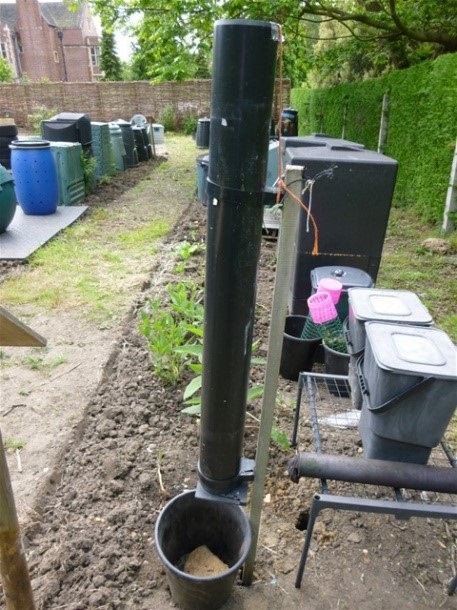Herbal, Plant and Seaweed Teas & Liquid Feeds
Fermented, or plant, teas are typically produced by soaking un-decomposed plant materials inun-chlorinated water for two or three week and provide a natural source of plant nutrients and an alternative to chemical fertilisers and pesticides which may harm insects, wildlife, plants and the soil. The www.carryoncomposting.com web page on plant feeds has been updated and now includes information on
Comfrey Tea
Comfrey is the most popular of these teas and we would recommend all composters to make it to supplement their composting and compost teas. Comfrey is a good source of potassium and nitrogen. Comfrey tea promotes the development of flowers and fruit and is best applied once the first flowers have set. It is recommended for use on tomatoes and peppers.
The most common method of making comfrey tea involves soaking the leaves in water but this is the method that produces the famous stinking liquid feed. A barrel or tub is quarter filled with comfrey leaves topped up with water and allowed to stand for 3 to 5 weeks. To make a good concentrated fertilizer the leaves should be pressed down into the container by a weight of top such as a brick of broken paving slab. Use a container with a lid to contain the smell.
Concentrated comfrey tea
Concentrated Comfrey tea has the advantage of not smelling anywhere near as much as the dilutes version. I recommend that it is made using a drainage pipe fitted with an end cap through which a single drainage hole has been drilled. Comfrey leaves are compressed in the pipe using a plastic bottle filled with sand or water or a sparkling wine bottle which is heavier and more fun to empty before use in the tube.
Dandelion Tea
Dandelions can be eaten in the early spring, the green buds can be eaten, and the opened blossoms used for jelly and the larger leaves dried to make a drink but to most of us they are a weed. But they are a weed that can be turned into a liquid plant feed with the remaining sludge being compostable.
Horsetail Tea
Horsetail
can be a nuisance on allotments as it is difficult to eradicate and while some might want to grow it as medical or cosmetic herb it should be remembered that the next occupant of the plot will have inherited a problem or a very persistent weed. I advocate
banning the deliberate cultivation, horsetail tea can form part of an eradication programme when the plant is present
Horsetail is high in silica and a when soaked to make a tea which, is said, to coat the leaves of treated plants producing a fungicide
and protect against blackspot, mildew and mint rust.
The plants need to be fully submerged under the water so are best put in a sack or an old vegetable net pinned down with a large stone or to suspend it in a submerged weighted bag . Regular stirring is recommended. The fermentation process can range from 10 days to 3 weeks, depending on the ambient temperature. During fermentation the mixture will produce gas which will bubble on the surface. Once the bubbling has stopped the it has finished bubbling the liquid can be strained and used.
Nettle Tea
Cut young nettles to about 5cm above soil level. Crush the leaves by scrunching the stems in gloved hands or by placing them on a freshly mown lawn and using a mower to chop them.
Put the crushed nettles into a bucket, weigh down with a brick and cover with water. Use about a half a standard bucket full (about one kilogram) of leaves to 10 litres of water. Allow to soak for 2 - 4 weeks. Stir occasionally.
Seaweed Plant Feed
Seaweed is a good source of potassium, up to 12%, and trace elements but it is low in nitrogen and phosphate. spraying is said to increase resistance to insect infestation.
To make a liquid seaweed brew soak the seaweed for about two months. It turns brown as it decomposes and will produce a fishy smell when being used.

Latest comments
Do you have any data on ' application ' of Aerated Vermi Compost Tea to Mangoes and benneficial outcomes .
Very informative site. Having been away for 5 weeks and returning to evidence of rats under and around the compost bin, I can testify to lack of human activity allowing the rats to get comfortable.
can i use dog manure in compost and mulching leaves?
What is the C and N ratio for coffee chaff?